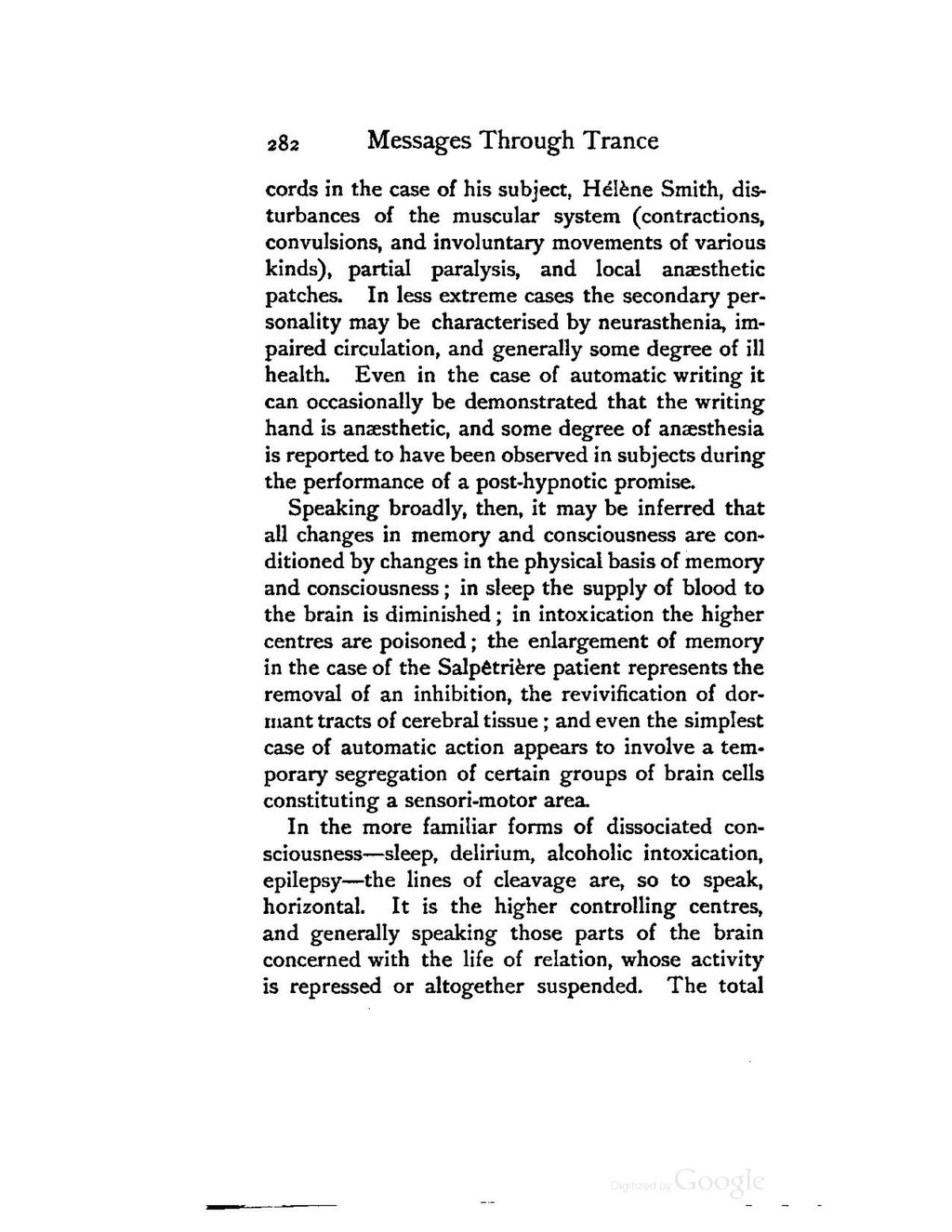cords in the case of his subject, Hélène Smith, disturbances of the muscular system (contractions, convulsions, and involuntary movements of various kinds), partial paralysis, and local anaesthetic patches. In less extreme cases the secondary personality may be characterised by neurasthenia, impaired circulation, and generally some degree of ill health. Even in the case of automatic writing it can occasionally be demonstrated that the writing hand is anaesthetic, and some degree of anaesthesia is reported to have been observed in subjects during the performance of a post-hypnotic promise.
Speaking broadly, then, it may be inferred that all changes in memory and consciousness are conditioned by changes in the physical basis of memory and consciousness; in sleep the supply of blood to the brain is diminished; in intoxication the higher centres are poisoned; the enlargement of memory in the case of the Salpétrière patient represents the removal of an inhibition, the revivification of dormant tracts of cerebral tissue; and even the simplest case of automatic action appears to involve a temporary segregation of certain groups of brain cells constituting a sensori-motor area.
In the more familiar forms of dissociated consciousness—sleep, delirium, alcoholic intoxication, epilepsy—the lines of cleavage are, so to speak, horizontal. It is the higher controlling centres, and generally speaking those parts of the brain concerned with the life of relation, whose activity is repressed or altogether suspended. The total

